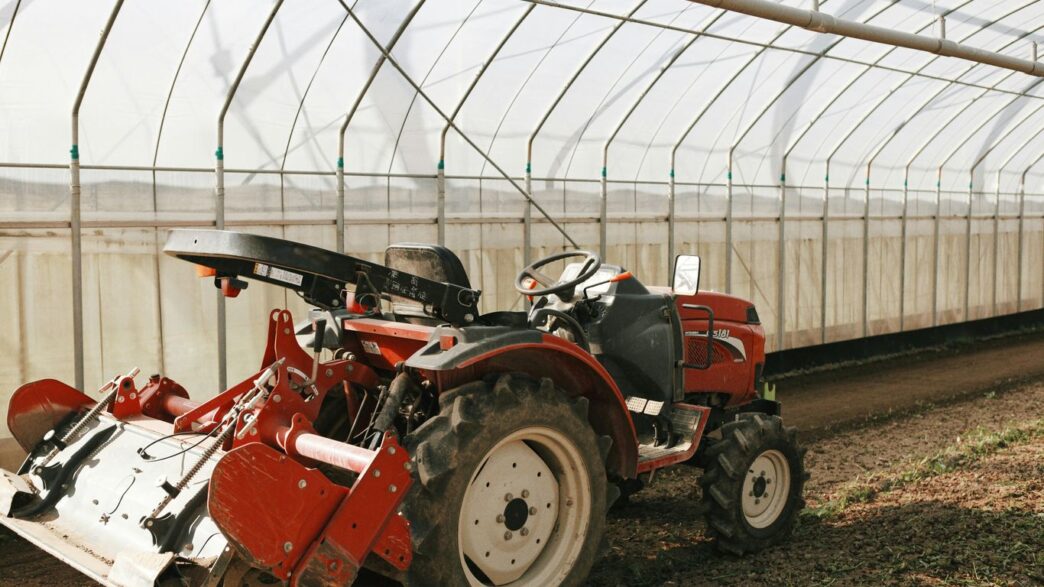The world of farming is changing fast. We’re talking about big shifts driven by new tech and a focus on being kinder to the planet. By 2025, it’s clear that the agriculture software companies leading the way are the ones blending smart technology with good environmental practices. This article looks at what’s happening now and what’s next for these important businesses.
Key Takeaways
- Leading agriculture software companies in 2025 are combining Environmental, Social, and Governance (ESG) principles with Artificial Intelligence (AI).
- AI is making farm management more precise, helping with things like crop monitoring, disease prediction, and using resources like water and fertilizer more efficiently.
- Technology is helping create more transparent supply chains, from the farm to your table.
- Companies focusing on sustainable farming practices and using data analytics are better prepared for climate challenges and labor shortages.
- The future of farming relies on integrating data, automation, and new skills to build more resilient food systems.
The Convergence Of ESG And AI In Agriculture
Understanding The ESG Imperative For Agriculture Companies
Farming businesses today are facing a lot of pressure. It’s not just about growing crops or raising livestock anymore. There’s a growing demand from consumers, investors, and even governments for companies to be more responsible. This is where ESG – Environmental, Social, and Governance – comes in. Think of it as a framework for how a company impacts the world around it. For agriculture, this means looking closely at how farming practices affect the environment, like soil health and water use. It also involves how companies treat their workers and the communities they operate in, and how transparent and fair their business decisions are. Many top agriculture companies are now seeing ESG not as a burden, but as a smart way to build a business that lasts.
AI’s Role In Revolutionizing Farm Management
Artificial Intelligence, or AI, is changing how farms are run. It’s like giving farmers super-powered tools to make better decisions. AI can analyze huge amounts of data from sensors in the field, drones, and even satellites. This helps in things like predicting the weather more accurately, spotting potential crop diseases before they spread, and figuring out exactly how much water and fertilizer each part of a field needs. This precision means less waste and better yields. For example, AI can help identify specific areas of a field that are struggling, allowing farmers to apply resources only where they’re needed most. This level of detail was just not possible a few years ago.
Synergistic Impact Of ESG And AI For Sustainable Farming
When you put ESG and AI together, something really powerful happens. AI provides the tools to measure and manage environmental impact, which is key for ESG goals. For instance, AI can track carbon being stored in the soil, helping farmers participate in carbon credit markets. It can also optimize resource use, cutting down on water and chemical runoff, directly benefiting the environment. On the social side, AI can help make farming safer and more efficient, potentially addressing labor shortages. And for governance, AI-driven data can lead to more transparent supply chains, letting consumers know where their food comes from and how it was produced. This combination helps create farms that are not only profitable but also good for the planet and its people.
Key Innovations Driving Agriculture Software Companies
Farming in 2025 is looking a lot different, thanks to some pretty smart software. It’s not just about planting seeds and hoping for the best anymore. Companies are rolling out tools that use data in ways we haven’t seen before, making farms more efficient and, hopefully, more sustainable.
Precision Agriculture Through Data Analytics
Think of it like this: instead of watering your whole lawn when only one patch is dry, you water just that spot. Precision agriculture does something similar for fields. Software uses data from sensors, drones, and even satellites to see exactly what each part of a field needs. This means using just the right amount of water, fertilizer, or pesticides, exactly where and when it’s needed.
- Real-time field monitoring: Get instant updates on soil moisture, nutrient levels, and plant health.
- Targeted input application: Reduce waste and costs by applying resources only where necessary.
- Yield mapping: Understand field performance variations to make better decisions next season.
AI-Powered Crop Monitoring And Disease Forecasting
Artificial intelligence is becoming a farmer’s best friend when it comes to spotting trouble early. AI can analyze images from drones or ground sensors to identify pests or diseases long before a human eye might catch them. It can also look at weather patterns and historical data to predict when and where outbreaks might happen. This early warning system is a game-changer for preventing widespread crop damage.
- Early pest and disease detection: AI algorithms can spot subtle signs of trouble in plant imagery.
- Predictive modeling: Forecast potential disease outbreaks based on environmental factors.
- Reduced crop loss: Proactive treatment means less damage and better yields.
Automated Systems For Enhanced Efficiency
Automation is taking over some of the more repetitive and labor-intensive tasks on the farm. We’re seeing more robots for things like planting, weeding, and harvesting. Software is also automating tasks like irrigation scheduling and equipment maintenance alerts. This not only speeds things up but also helps address the ongoing labor shortages many farms face. It’s about making the most of the resources and people you have.
Leading Agriculture Software Companies In 2025
Farmonaut: Empowering Sustainable Farming With Technology
When you look at the companies making waves in agriculture software by 2025, Farmonaut really stands out. They’re not just about fancy tech; they’re focused on making farming more sustainable and profitable, which is a big deal these days. Think about it – we need to grow more food, but we also need to take better care of the planet. Farmonaut seems to get that balance.
They’ve built tools that help farmers manage their land and crops using data. This isn’t just about knowing how much water to use; it’s about understanding soil health, predicting potential pest problems before they get out of hand, and figuring out the best time to harvest. Their approach combines environmental responsibility with smart business practices. It’s like giving farmers a super-powered assistant that uses satellite images and other data to make better decisions.
Identifying Top ESG And AI Agriculture Companies
So, how do you spot the leaders in this space? It’s not just about who has the flashiest app. The top companies in 2025 are those that truly weave environmental, social, and governance (ESG) principles into their core business, and they use artificial intelligence (AI) to make it happen. We’re talking about companies that:
- Help farmers reduce their environmental footprint, like cutting down on water and fertilizer use.
- Use AI to monitor crop health and predict yields, leading to less waste.
- Promote fair practices throughout the supply chain, making sure everyone involved is treated well.
- Provide tools that help measure and even improve soil carbon levels, which is a growing area of interest.
It’s a complex picture, but the companies that are doing well are the ones that show real, measurable improvements for farmers, the environment, and their own bottom line. They’re proving that doing good and making money can go hand-in-hand.
Comparative Analysis Of Market Leaders
When we compare the big players in agriculture software for 2025, a few things become clear. The companies that are really leading the pack are those that have successfully merged AI capabilities with a strong commitment to ESG. It’s not enough to just have one or the other.
Here’s a quick look at what separates the top performers:
| Company Name | AI Integration Level | ESG Focus | Key Solutions |
|---|---|---|---|
| Farmonaut | High | Strong | Precision Ag, Carbon Footprinting, Supply Chain Traceability |
| AgriTech Solutions | Medium | Moderate | Farm Management Software, Yield Prediction |
| GreenGrow Systems | High | Strong | Automated Irrigation, Soil Health Monitoring |
What we’re seeing is that companies like Farmonaut are not only providing advanced AI tools for things like precision agriculture and carbon footprint tracking but are also deeply committed to social and environmental responsibility. This dual focus is what sets them apart and positions them as leaders in the evolving agricultural landscape. Other companies are making strides, but the integration of these two areas is where the real innovation is happening.
Transforming Farm Operations With Digital Tools
Farming today is way more than just planting seeds and hoping for the best. It’s become a complex operation, and digital tools are really changing the game. Think about it: instead of just guessing, farmers can now use data to make smarter choices about pretty much everything.
Optimizing Resource Management With AI
One of the biggest wins comes from using AI to manage resources like water and fertilizer. It’s not about using less, but using what you need, exactly where and when you need it. AI systems can look at soil moisture, weather forecasts, and even the specific needs of different parts of a field to figure out the perfect amount of water and nutrients. This means less waste, lower costs, and healthier crops. It’s pretty neat how technology can help us be more efficient with what nature gives us.
Enhancing Yield Prediction And Planning
Knowing what to expect from your harvest is a huge deal for planning. AI models can analyze historical data, current weather patterns, and crop health information to give pretty accurate yield predictions. This helps farmers decide when to plant, when to harvest, and how much to produce. It also helps with market planning, so you’re not caught off guard by supply or demand.
Here’s a quick look at how AI helps with planning:
- Better Crop Selection: AI can suggest crops that are best suited for specific soil types and climate conditions.
- Optimized Planting Schedules: Data helps determine the ideal time to plant for maximum growth and yield.
- Informed Harvesting: Predictions guide the timing of harvest to get the best quality and quantity.
Supply Chain Transparency Through Digitalization
Getting food from the farm to your table involves a lot of steps. Digital tools are making this whole process more open and traceable. When you can track a product from the field all the way to the store, it builds trust. Farmers can show exactly how their crops were grown, and consumers can feel more confident about what they’re buying. This digital trail helps identify any issues quickly and makes the whole system work smoother. This level of transparency is becoming a major expectation from consumers and regulators alike.
The Future Of Food Production And Technology
So, what’s next for how we grow and eat? It’s a big question, right? We’re looking at a future where farming isn’t just about dirt and sun anymore. Think about it: we’ve got a growing planet to feed, and the climate isn’t exactly cooperating. This means we need some serious smarts and new ways of doing things.
Navigating Climate Challenges With Smart Agriculture
Climate change is a real headache for farmers. We’re seeing more floods, more droughts, and just generally weird weather patterns. Smart agriculture is stepping in to help. It’s all about using technology to deal with these unpredictable conditions. We’re talking about crops that can handle salty soil or don’t need as much water, thanks to things like advanced gene editing. Plus, farms are starting to act like sponges for carbon dioxide, actually helping to clean the air.
Here are a few ways tech is helping us adapt:
- Better Crops: Developing plants that are tougher and need fewer resources.
- Water Management: Using sensors and AI to make sure every drop of water counts.
- Carbon Sequestration: Designing farms to pull more CO2 out of the atmosphere.
Addressing Labor Shortages Through Automation
Finding people to work on farms is getting harder. It’s a problem in a lot of places. Automation is a big part of the answer. Robots are starting to do tasks like planting, harvesting, and even monitoring crops. This isn’t just about replacing people; it’s about making sure the work gets done efficiently and accurately, even when there aren’t enough hands.
Investing In The Next Generation Of AgTech
To really make a difference, we need to keep pushing the boundaries. This means putting money into new ideas. We’re seeing a lot of innovation in areas like:
- Vertical Farming: Growing food indoors in stacked layers, often in cities.
- Cellular Agriculture: Growing meat and other animal products from cells, without raising animals.
- AI and Data: Using artificial intelligence to analyze vast amounts of farm data for better decision-making.
The goal is to create a food system that’s not only productive but also kinder to the planet and more reliable for everyone. It’s a complex puzzle, but the pieces are starting to come together.
Strategic Imperatives For Agriculture Leaders
So, what does all this mean for the folks in charge? It’s not just about buying the latest gadget; it’s about a bigger shift. Leaders today have to think about how to actually make these new technologies work on the ground, and how to keep the planet happy while doing it.
Integrating Data Analytics And Automation
This is where the rubber meets the road. You can have all the fancy sensors and AI programs, but if the data isn’t flowing right or the automated systems aren’t talking to each other, it’s just a bunch of expensive equipment. Think of it like trying to cook a meal with a bunch of amazing ingredients but no recipe or a working oven. You need a plan to connect everything.
- Connect the dots: Make sure your farm management software talks to your automated irrigation, your drone data, and your soil sensors. No more data silos!
- Start small, then scale: Don’t try to automate everything at once. Pick one area, like pest detection with AI, and get that working smoothly before moving on.
- Train your team: People are key. Your crew needs to know how to use these new tools and understand what the data is telling them. It’s not just for the tech wizards anymore.
Developing Skills For Tech-Augmented Farming
Farming has always required skill, but now it’s a different kind of skill. We’re talking about people who can read a data dashboard as easily as they can read the weather. This means investing in your workforce, not just in machines.
- Upskilling programs: Offer training on new software, drone operation, and basic data interpretation. Many companies are finding that their existing teams can adapt with the right support.
- Hiring for new roles: You might need people with backgrounds in data science or agricultural engineering. Look for folks who understand both the tech and the farm.
- Partnerships: Work with universities or tech providers to bring in specialized knowledge. Sometimes, it’s easier to bring in an expert for a specific project than to train someone from scratch.
Building Resilient And Sustainable Supply Chains
This isn’t just about being green; it’s about making sure your farm can handle whatever the world throws at it. Climate change, market swings, unexpected disruptions – a strong supply chain can weather these storms. Transparency is the name of the game here. Knowing where your products come from, how they’re grown, and how they get to the consumer builds trust and helps you spot problems before they become disasters.
- Traceability tech: Use blockchain or other digital tools to track your products from seed to shelf. This helps with food safety and can even fetch a premium price.
- Diversify suppliers: Don’t put all your eggs in one basket. Having multiple sources for inputs and multiple markets for your output makes you less vulnerable.
- Local and regional focus: Strengthening local food systems can reduce transportation costs and emissions, while also building community resilience. It’s a win-win.
Looking Ahead
So, as we wrap up our look at the agriculture software scene in 2025, it’s pretty clear things are changing fast. The companies we’ve talked about aren’t just selling tools; they’re helping shape how we grow food in a world that needs to be smarter about resources and the environment. It’s not just about making farms more efficient, though that’s a big part of it. It’s also about making sure we can keep feeding everyone, while also taking better care of the planet. The tech is getting pretty advanced, with AI and data playing larger roles. It’s an exciting time, and the companies leading the way are the ones that understand this bigger picture. They’re the ones to watch as farming continues to evolve.
Frequently Asked Questions
What is ESG and why is it important for farming companies?
ESG stands for Environmental, Social, and Governance. It’s like a report card for how well a company takes care of the planet (Environmental), treats its people and communities (Social), and runs its business fairly and openly (Governance). For farming companies, being good at ESG means farming in ways that don’t harm the environment, treating farm workers well, and being honest about their business practices. This is becoming super important because people want to buy food from companies that are responsible and care about the future.
How is Artificial Intelligence (AI) changing farming?
AI is like giving farms a super-smart brain! It uses technology to help farmers make better decisions. For example, AI can look at pictures of crops to tell if they’re getting sick way before a human can see it. It can also figure out exactly how much water or fertilizer each part of a field needs, saving resources. AI helps automate tasks, making farms more efficient and dealing with fewer workers.
What does ‘Precision Agriculture’ mean?
Precision agriculture is all about using technology and data to farm more precisely. Instead of treating a whole field the same way, farmers use tools like GPS, sensors, and drones to understand what’s happening in small areas of their fields. This means they can give water, fertilizer, or pesticides only where they are needed, and in the exact amounts required. It’s like giving each plant exactly what it needs to grow best.
How do ESG and AI work together in farming?
Think of ESG as the ‘what’ and AI as the ‘how.’ ESG sets the goals for being responsible and sustainable – like reducing water use or improving soil health. AI provides the tools and smarts to actually achieve those goals. For instance, AI can analyze data to show farmers the best ways to conserve water (an ESG goal) or predict when pests might attack, helping to reduce the need for harmful chemicals (another ESG goal).
Why are companies like Farmonaut important in agriculture today?
Companies like Farmonaut are important because they create the technology that helps farmers become more sustainable and efficient. They use tools like satellite images and AI to help farmers manage their land better, grow healthier crops, and reduce their impact on the environment. They are essentially building the ‘smart tools’ that farmers need to farm for the future, making sure we can grow enough food without hurting the planet.
What are the biggest challenges facing farming in the future, and how can technology help?
Farming faces big challenges like climate change (droughts, floods), feeding a growing world population, and not having enough workers. Technology, especially AI and data tools, can help by making farms more resilient to weather changes, improving how much food we can grow on less land, and automating tasks so farms can run even with fewer people. It’s about using smart solutions to overcome tough problems.














